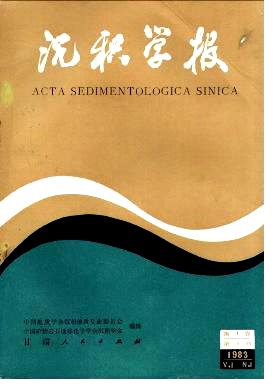PRELIMINARY STUDY OF CARBONATE IN THE SEDIMENTS OF THE EAST CHINA SEA
- Received Date: 1982-04-13
- Publish Date: 1983-03-10
Abstract: The total cardonate contents of the sediments in the East China Sea are abundant and widely distributed. The contents distribution and components vary with di-ffernt environmental conditions. It appears that among all the measured contents the contents of the outshore carbonate are greater than those of the near-coast carbonate and the contents of the southwestern area greater than those of the northwestern area, and the contents in the Okinawa Trough carbonate the greatest. The eomponents of the carbonate in the sediments of the East China Sea are mainly molluscan shell remains, foraminiferal scale and terrigenous fragmental carbonate etc. In the near coastal river mouth and inner continental shelf areas, there are mainly terrigenous fragmental carbonate, with a little bit of carbonate caused by chemical precipitation and biochemical processes. Also there are some organic remains. The carbonate in the outshore area is mainly made of the remains and newly growing organic skeleton. The maior chemical constituent in the sediments is caleium carbonate. This has been proved by the ratio and linear relation between carbonate and calcium contents. The mineral composition in carbonate is mainly calcite. As sea areas are different, the formation conditions of carbonate are also different. The carbonate in the near coastal river mouth area was formed mainly by the reprecipitation of the enomous terrigenous carbonate and acid carbonate carried by the Yangtze River. The biotic shells remains on the outershelf areas are the important source of carbonate, whereas in the outer shelf edge area and the Okinawa Trough, because the Kuroshio warm current passes through, the high temeprature, salinity and nutrients of the Kuroshoi current are suitable for organism, such as planktonic foraminifera, growing and breeding. After their death, their remains form a great quantity of deposits, which greatly increase the contents of carbonate. This results in a unique environment containing abundant organic carbonate. The distribution of carbonate in the East China Sea is closely related with the latitude, that is their contents decrease as the latitude increases. The conservational conditions of carbonate are also controlled by the factors of pH, water temperature, water pressure, hydrodynamic conditions and depositional rate etc. The East China Sea is in a weak alkaline environment and the temperature varies in a limited range. All these are favorable for the conservation of carbonate. The depositional rate is another important factor that affects the contents of carbonate. In the near coastal river mouth area with a high depositional rate, it is believed that the abundant terrigenous materials not only bury the carbonate forming organisms deeply, but also carry a large quantity of clay mtter which causes relatively less contents of carbonate than those in the areas of low depositional rate where the organic remains can continuously deposit at the surface.
| Citation: | Sui Liangren, Huang Depei. PRELIMINARY STUDY OF CARBONATE IN THE SEDIMENTS OF THE EAST CHINA SEA[J]. Acta Sedimentologica Sinica, 1983, 1(1): 63-74. |






 DownLoad:
DownLoad: